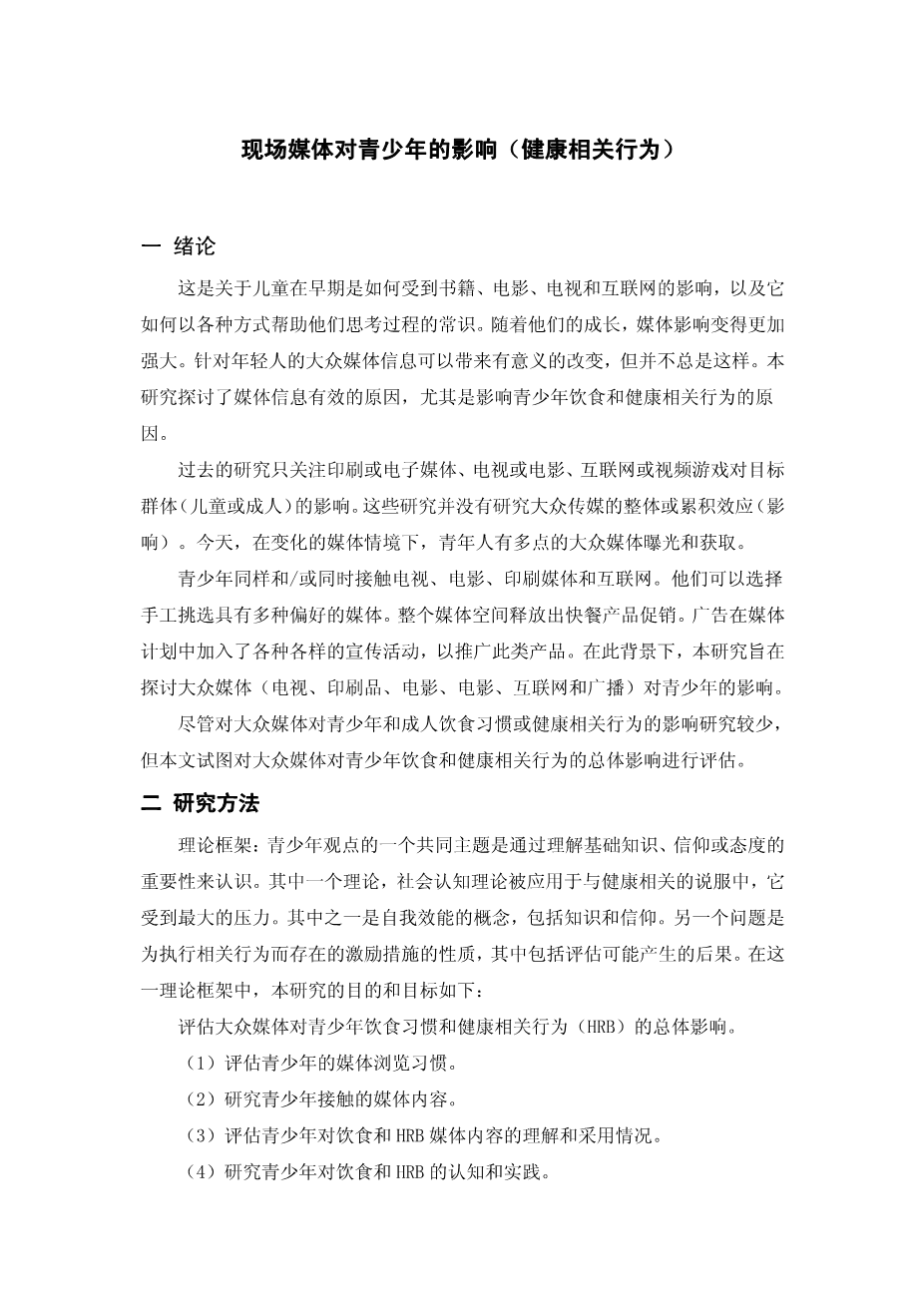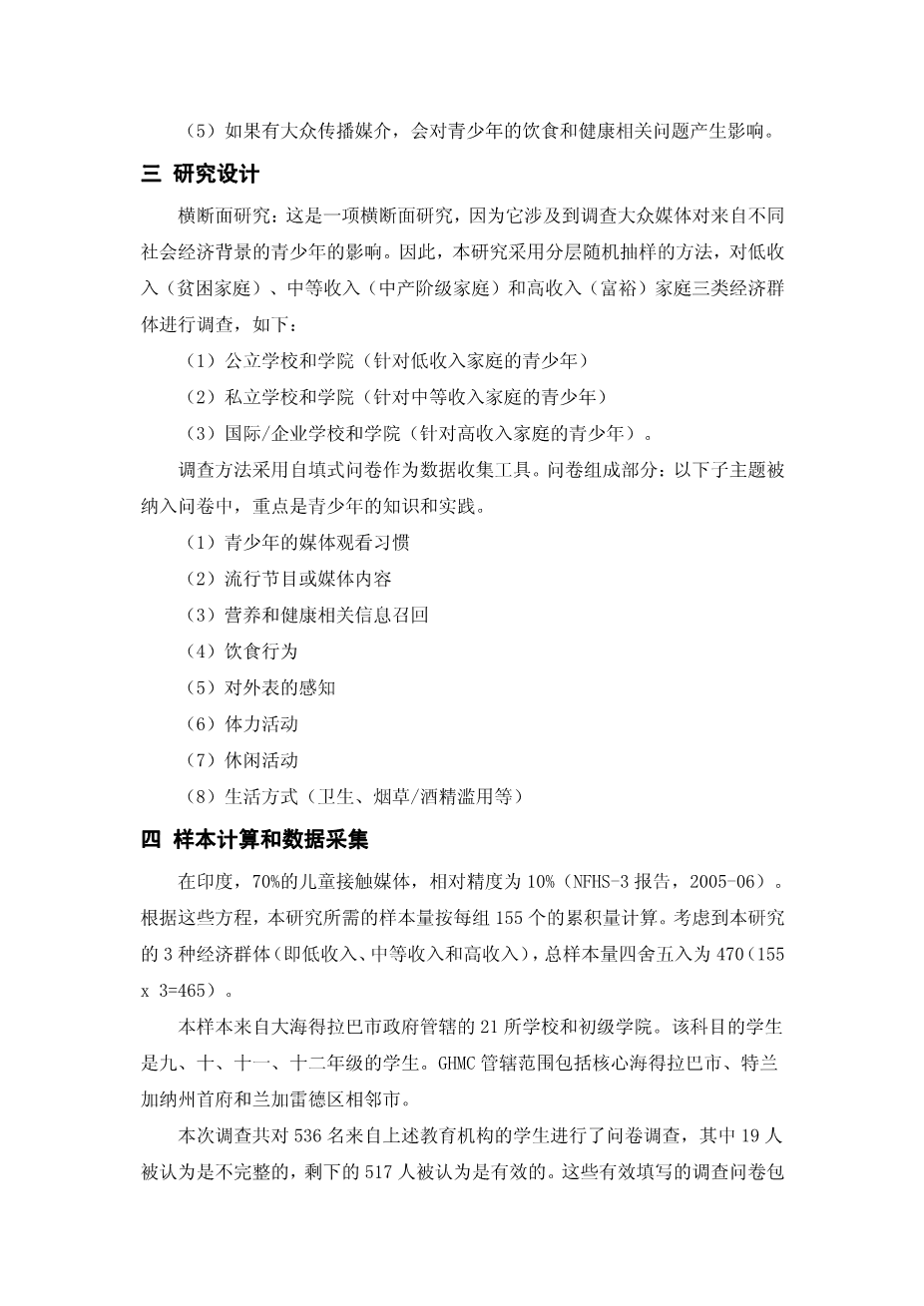INFLUENCE OF MASS MEDIA ON TEENAGERS’
DIET AND HEALTH-RELATED BEHAVIOUR
By M. MAHESHWAR
Dated 15th October, 20
Introduction
It is common knowledge as to how children at an early age are influenced by books, movies, television, and the Internet and how it aids them in their thinking process in a variety of ways. As they grow, media influences become even more powerful. Mass media messages directed at young people can effect meaningful change but they do not always do so. This study explores reasons why media messages have been effective, especially of influencing adolescents’ diet and health-related behaviours.
Studies in the past have had isolated focus on impact of either print or electronic media; television or films; Internet or videogames on target group (children or adults). Such studies have not looked at the overall or cumulative effect (influence) of mass media. Today, under the changed media scenario, youth have multi-point mass media exposure and access.
An adolescent is exposed to television, movies, print media and Internet equally and/ or simultaneously. They have choices to hand-pick media with a host of preferences. The whole gamut of media space unleashes fast food product promotions. Advertising incorporates a wide variety of campaigns in media plans to promote such products. In this context, this study was taken up to examine influence of mass media (television, print, movies, films, internet and radio together) on teenagers.
Though, there are few studies on the influence of mass media either on food habits or health related behaviour on adolescents and adults, this thesis attempts to evaluate the overall influence of mass media on teenagers’ diet and health related behaviour.
Methodology
Theoretical Frame: A common theme of teenagers’ perspectives is known by understanding the importance of underlying knowledge, beliefs, or attitudes. One of these theories, social cognitive theory is applied to health related persuasion, which receive greatest stress. One of these is the concept of self-efficacy, which includes knowledge and belief. The other concerns the nature of incentives that exist to perform relevant behaviours, which include the consequences that are likely to result from their evaluation. In this theoretical frame, the following Aims and Objectives were framed for this study:
•To assess overall influence of mass media on eating habits and Health Related Behaviour (HRB) of teenagers.
Objectives:
1.) To assess media viewing habits of teenagers.
2.) To study the media content which the teenagers’ are exposed to.
3.) To assess teenagers’ understanding and adoption of media content on diet and HRB.
4.) To study teenagers’ perceptions and practices of diet and HRB
5.) To elicit influence of mass media, if any, on diet and health related matters of teenagers.
Study Design
Cross-sectional study: This is a cross-sectional study as it involves examining influence of mass media on teenagers from different socio-economic backgrounds. Accordingly, this study adopted stratified random sampling procedure having 3 types of economic groups’ viz., lower-income (poor families), middle-income (middle- class families) and higher income (rich) families as follows:
1.) Government schools amp; colleges (for teenagers of lower-income families) 2.) Private schools amp; colleges (for teenagers of middle-income families)
3.) International/corporate schools amp; colleges (for teenagers of higher-income families).
Survey method was used with a self-administered questionnaire as a tool for data collection.
Questionnaire Components: The following sub-topics were incorporated in the questionnaire with thrust on knowledge and practice of teenagers.
•Media viewing habits of teenagers
•Popular programmes or content of media
•Nutrition and health related information recall
•Dietary behaviour
•Perception of physical appearance
•Physical activity
•Leisure activity
•Lifestyle (hygiene, tobacco/alcohol abuse etc)
Calculation of Sample and Data collection
In India, 70% of children are exposed to media with 10% relative precision (NFHS- 3 Report, 2005-06). Based on these equations, the required sample size for this study was calculated as a cumulative of 155 per group. Considering 3 types of economic groups for this study (viz., lower, middle and higher income), the total sample size was rounded as 470 (155 x 3 = 465).
This sample was drawn from 21 schools and Junior colleges under the jurisdiction of Greater Hyderabad Municipal Corporation (GHMC) of Telangana state. Subjects of the sample are students of IX, X, XI, XII during the academic year 2013-14 and 2014-15. GHMC jurisdiction includes core Hyderabad city, the capital of Telangana state and adjacent municipalities of Ranga Reddy district.
A total of 536 students from all the above educational institutions were administered the questionnaire, of them 19 were found as incomplete and remaining 517 questionnaires were found as valid for analysis. These valid filled-in questionnaires include 183 students of corporate/ international institutions; 158 students of private institutions; and 176 students of government institutions. Of the total 517 samples, 253 were boys and 264 were girls.
FINDINGS amp; CONCLUSIONS
This study on influence of mass media on teenagers’ provides key insights into the diet and health-related behaviour of young people. This study focussed on a wide range of dietary perceptions and health-related awareness among the adolescents under the influence of mass media.
Analysis of the data highlights variation between same age group children and between genders in usage of media, understanding of media messages and health related behaviour. Mass media influence on teenagers varied broadly based on their f
剩余内容已隐藏,支付完成后下载完整资料


英语译文共 7 页,剩余内容已隐藏,支付完成后下载完整资料
资料编号:[447857],资料为PDF文档或Word文档,PDF文档可免费转换为Word


